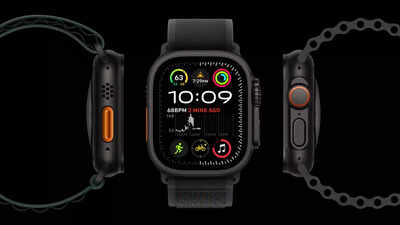- News
- Technology News
- Wearables News
- Apple Watch Ultra 3 to reportedly come with satellite texting and blood pressure monitoring features
Trending
Apple Watch Ultra 3 to reportedly come with satellite texting and blood pressure monitoring features
Apple Watch users may soon have blood pressure monitoring on their wrists by 2025, according to Bloomberg. This feature will detect elevated blood pressure trends, alerting users to potential hypertension risks. While not providing precise measurements initially, it encourages proactive health management.
Apple Watch users may soon be able to monitor their blood pressure directly from their wrist. According to a recent report from Bloomberg's Mark Gurman, Apple is ramping up work on blood pressure monitoring and satellite connectivity features for the Apple Watch 3, with a potential release date in 2025.
Apple Watch may get blood pressure monitoring feature
While exciting, Gurman's report suggests the initial implementation wouldn't provide exact systolic and diastolic blood pressure measurements. Instead, the Apple Watch would focus on identifying trends and alerting users if their blood pressure appears to be consistently elevated, potentially indicating hypertension. Users would then be advised to consult a healthcare professional for further evaluation.
High blood pressure, often referred to as the "silent killer," can cause significant health problems if left undetected and untreated. Early identification allows individuals to take steps towards managing their blood pressure and lowering their risk of heart disease, stroke, and other complications.
Staying connected off the grid

About the Author
TOI Tech DeskEnd of Article
Latest Mobiles
FOLLOW US ON SOCIAL MEDIA









